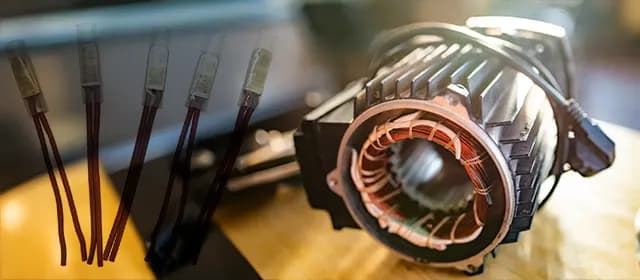Energy systems increasingly depend on storage to bridge the intermittency of solar, wind, and other renewables. Microgrids (localized grids that can operate independently of the central grid) require reliable, safe, and cost-effective storage to stabilize supply and demand. Zinc-based battery technologies present compelling advantages for stationary storage and microgrid deployments. This blog explores how zinc batteries support renewable integration, examines their technical merits and challenges, surveys real deployments and vendor activity, and discusses prospects.
Kings Research estimates that the global zinc battery market size was valued at USD 974.7 million in 2024 and is projected to grow from USD 1098.7 million in 2025 to USD 2728.6 million by 2032, exhibiting a CAGR of 13.53% over the forecast period.
Why Zinc Batteries Matter for Renewable Integration
Renewable energy sources generate power variably, depending on sunlight or wind conditions. Storage systems must absorb surplus generation and dispatch power during deficits. Lithium-ion batteries currently dominate short-duration storage, but limitations in safety, raw material supply, recycling, and long-duration suitability underscore the need for alternatives. Zinc batteries, especially aqueous zinc chemistries, offer inherent safety, abundant materials, recyclability, and potential for longer duration storage.
The U.S. Department of Energy’s assessment “Storage Innovations 2030: Zinc Batteries” highlights zinc-based systems as promising for stationary and distributed energy applications, particularly for durations beyond typical lithium systems. This report also emphasizes the maturity of zinc chemistries and the ongoing industrial development required for broader scale deployment.
Projects supported by state funds aim to advance zinc battery readiness. One California project funded in 2024 elaborated a stationary nickel-zinc battery with commercial-scale anode fabrication, demonstrating progress toward reliable zinc electrode manufacturing.
Industry interest reinforces the relevance of zinc battery systems. Eos Energy recently secured a strategic order for its Znyth aqueous zinc battery as part of a microgrid deployment. That project scales to 3 MW/15 MWh for a tribal microgrid in northern California. Enzinc, a zinc battery developer, raised $8 million in Series A funding in December 2024 to drive renewable energy storage commercialization. These developments show that zinc battery technologies are advancing from the laboratory toward field implementation.
Technical Benefits of Zinc-Based Energy Storage Systems
- Safety and Stability: Zinc aqueous chemistries exhibit low fire risk compared to lithium systems. The electrolytes used in many zinc battery designs are non-flammable or less volatile, reducing thermal runaway concerns. Industry sources describe zinc batteries as non-toxic, stable over a wide temperature range, and requiring minimal maintenance. This safety profile makes them suitable for integration close to critical infrastructure or in enclosed environments typical of microgrids.
- Material Abundance and Lifecycle: Zinc as a raw material is inexpensive, widely available, and recycled through existing industrial processes. This contrasts with lithium, cobalt, and nickel supply chains, which face geopolitical concentration and environmental constraints. Zinc battery systems can support circular material flows. The zinc ecosystem, including existing supply chains, helps mitigate volatility and resource risk for energy storage applications. Manufacturers also emphasize that zinc systems are recyclable at the end of life. Plans for closed-loop electrode recovery and reuse align with sustainability goals in grid infrastructure deployment.
- Cycle Life, Duration, and Scalability: Zinc batteries designed for stationary storage aim for robust cycle life. Some zinc-bromine flow battery variants promise thousands of cycles, and non-flow zinc battery designs aim for long durations (3 to 12 hours or more). Zinc systems scale in modular fashion, enabling deployments from microgrid scale to utility scale. Eos’ expansion plans include solar-plus long-duration microgrid projects on tribal lands. In one utility project in Nebraska, Eos will supply 3 MW / 12 MWh zinc aqueous battery storage managed by Wattmore’s energy management system. This project confirms that zinc battery systems are already entering the utility domain for grid support roles.
- Operational Efficiency and Round-Trip Performance: Round-trip efficiency in zinc battery systems must remain competitive to avoid energy losses eroding economic viability. Zinc battery technologies typically exhibit lower efficiency than established lithium systems, but ongoing improvements in electrode design, electrolyte formulation, and control algorithms may bridge the gap. The DOE assessment points to efficiency, material stability, and manufacturing readiness as key areas for further R&D. Hybrid designs and control strategies can optimize performance under typical microgrid load profiles. The modular nature of many zinc systems allows operators to size capacity and power independently, offering flexibility in matching renewable generation patterns.
How Zinc Batteries Support Microgrids
Microgrids require storage that can perform in autonomous mode (islanding) while maintaining local stability, voltage and frequency control, and demand response. Renewable penetrations within microgrids necessitate storage that can absorb variability, compensate for intermittency, and provide backup power during grid outages.
Zinc batteries’ safety and thermal stability make them suitable for microgrid installations near load centers, which reduces transmission losses and risk. Their modular design allows microgrid designers to right-size storage to match daily solar or wind generation profiles. Zinc battery systems can manage intermediate storage durations (3 to 24 hours) relevant for microgrids transitioning through nighttime or low generation windows.
In projects such as the Faraday microgrid initiative, zinc systems support community resilience. Eos’ order for the Paskenta tribal microgrid integrates zinc batteries into a mixed renewable, fuel cell, and diesel hybrid design under microgrid controller supervision. (That deployment aims to supply reliable backup power to critical infrastructure in island mode while optimizing renewable dispatch.
Zinc battery deployments reduce reliance on fossil backup generators in microgrids, lowering emissions and operational costs. Microgrid operators benefit from predictable operating costs, lower maintenance, and safer chemical systems.
What Are the Key Challenges Facing Zinc Battery Deployment?
Zinc battery technology is still maturing relative to pervasive lithium systems. Efficiency, energy density, and capital cost remain areas of improvement. Some chemistries suffer from electrode degradation, dendrite formation, or imbalance over time that can reduce capacity retention.
Scale-up of manufacturing, supply chain stability, and yield optimization pose substantial challenges. Many zinc battery firms are in the scale-up or pilot phase. The DOE technology strategy notes that broader commercial infrastructure development is necessary to support growth. Energy density remains lower for some zinc systems compared to lithium alternatives.
Long-term durability under real operating conditions, including cycling depth, temperature variation, and aging effects, must be demonstrated in field deployments. Field data over the years will validate theoretical claims. Some zinc battery designs require mechanical systems (e.g., pumps in flow systems or electrode wiping mechanisms), increasing complexity, maintenance demands, or ancillary energy draw. Reliability of these subsystems is crucial in microgrid contexts.
Timely technological advancement in electrode materials, separator membranes, and electrolyte formulations is needed to improve round-trip efficiency, reduce parasitic losses, and extend cycle life. Regulatory, permitting, and safety standards for battery storage systems are written with lithium chemistries in mind. Adoption of zinc battery installations may require adapting codes, safety certifications, and interconnection rules.
Industry Adoption and Key Zinc Battery Projects
Eos Energy has secured key orders and project partnerships. The Znyth aqueous zinc battery system forms the basis of several microgrid and renewable projects. An expansion of an existing project by Eos in India underlines its international ambitions.
The Nebraska 3 MW/12 MWh zinc battery deployment further confirms utility interest. Enzinc’s funding round in late 2024 supports scaling electrode fabrication and commercialization of zinc battery systems. The New York Power Authority (NYPA) selected a zinc-air storage project to demonstrate long-duration energy storage in support of carbon-neutral goals. (Source: prod-www.nypa.gov)
At scale, hydrogen or flow battery approaches compete; however, zinc systems benefit from modularity and simpler architectures. The DOE document on zinc battery strategy highlights multiple participants, including ZAF Energy and Enzinc, working to bring zinc battery chemistries into broader energy storage portfolios.
What Does the Future Hold for Zinc Battery Technologies?
Ongoing research must improve energy efficiency, cycle life, and manufacturing cost. Innovations in electrode design, electrolyte additives, separator materials, and architecture optimization will be key. Integration of smart control systems can optimize duty cycles for maximum lifetime and performance.
Demonstration projects in diverse climates and microgrid topologies will validate reliability and performance under real conditions. Longitudinal performance data will strengthen confidence among utilities, regulators, and microgrid developers. Standardization and industry collaboration will help refine safety codes, interconnection guidelines, and operational protocols. Shared lessons and consortia can accelerate adoption and reduce risk.
Hybrid systems combining lithium and zinc storage may become common. In high-peak, short-duration use cases, lithium may provide power support while zinc handles bulk energy shifting. This leverages the strengths of each chemistry across different time scales. Zinc battery systems may expand from microgrids toward grid-scale long-duration storage applications, offering an alternative to long-duration lithium or flow technologies. Research into zinc-air, zinc-nickel, and hybrid zinc chemistries continues.
Regulatory incentives and policy support for long-duration storage will influence deployment. Public funding, tax incentives, or mandates for storage durations beyond four hours can tilt economics in favor of zinc systems. As renewable energy capacity scales globally, the demand for safe, durable, low-cost storage will intensify. Zinc battery systems are well-positioned to contribute to microgrid resilience, grid stability, and renewable integration.
Conclusion
Zinc batteries now occupy a promising niche in the energy storage landscape, particularly where safety, modular deployment, and durability matter. Their chemical stability and reduced fire risk make them suitable for microgrid contexts and critical infrastructure. The industry is rapidly advancing: Eos’ microgrid orders, Enzinc funding traction, and utility-scale projects illustrate progress from concept toward deployment. Technical challenges remain in efficiency, scale, and longevity. Overcoming these will require coordinated innovation, field validation, and supportive regulatory frameworks. When integrated thoughtfully, zinc battery systems can strengthen the backbone of renewable energy integration and enable more resilient microgrids that power communities reliably into the low-carbon future.



